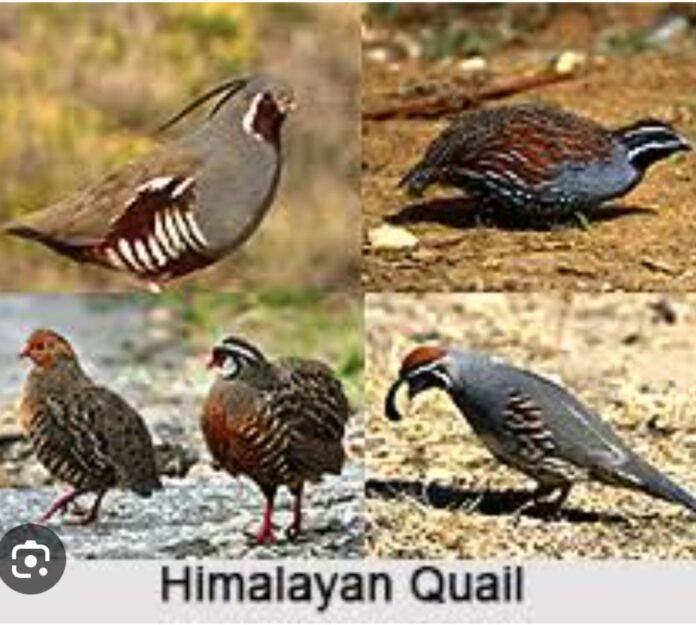The species was last seen more than 70 years before independence, it is one the very critically endangered species of Indian birds
BI News, Nainital:The Himalayan quail is native to India, found only in the mountains of Uttarakhand in the north-west Himalayas. The last sightings recorded before 1877 were from Mussoorie and Nainital hill stations, suggesting that they prefer higher altitudes. They are known to inhabit long grass and scrubs on steep hillsides, particularly south facing slopes between the altitudes of 1,650 and 2,400 metres.

This is a medium-sized bird belonging to the pheasant family, with distinctive red or yellow bill and legs, and prominent white spots around the eyes. It has a long covert tail which is longer than most other quails. Males are dark grey with bleak streaks and a white forehead, and females are grayish brown with dark streaks. The last sighting of this bird was a group of a dozen individuals, indicating that they are social birds and generally live in coveys of five to ten. Since they were last seen more than 125 years ago, very little is known about their behaviour and characteristics.
campaign will feature daily camps in four to five panchayats
They feed on grass, seeds, insects and berries. When feeding, they call to each other with a low, short, Quail-like note, their alarm note and call when separated being a shrill whistle. Their range in the Himalayas in winter is probably from five to eight thousand feet.
Probably the bird is extinct. The International Union for Conservation of Nature (IUCN) had categorized and evaluated these bird species and had listed them as of “Critically Endangered”. As per the latest release, this species has now been moved to the “extinct” category in the latest Red List by IUCN.


The main reasons behind the decline in the population of these birds include loss, modification , fragmentation and degradation of habitat, environmental contaminants poaching and land use change.
The main reasons behind the decline in the population of these birds include loss, modification , fragmentation and degradation of habitat, environmental contaminants poaching and land use change.
WWF-India works to raise awareness about this species and encourage people to search for it. More recently, it has supported the Forest Department of Uttarakhand in its awareness raising campaign by helping create awareness posters but the result is still awaiting.








